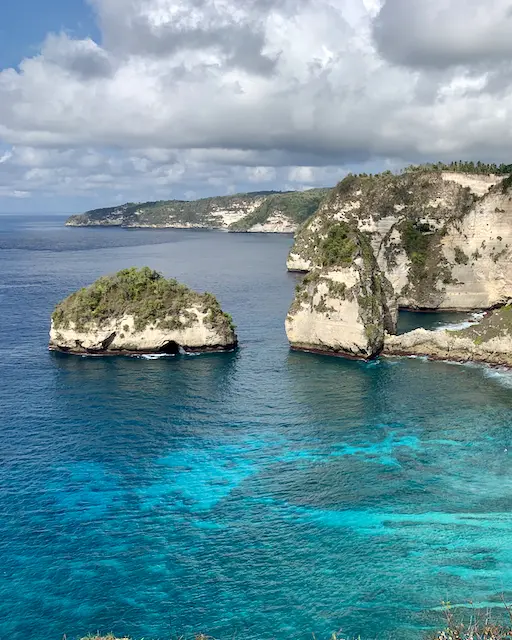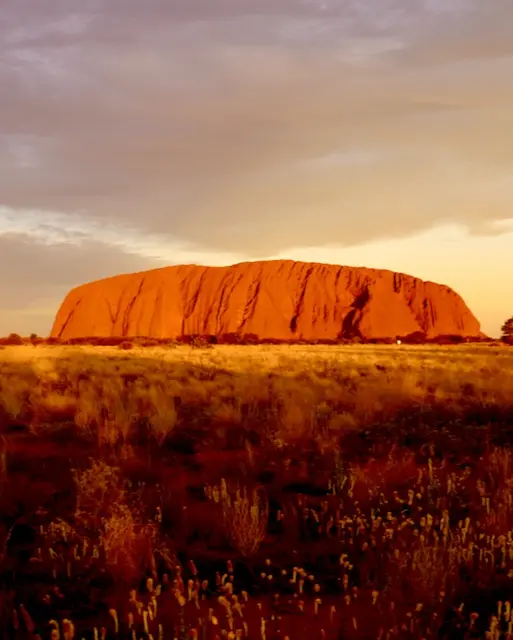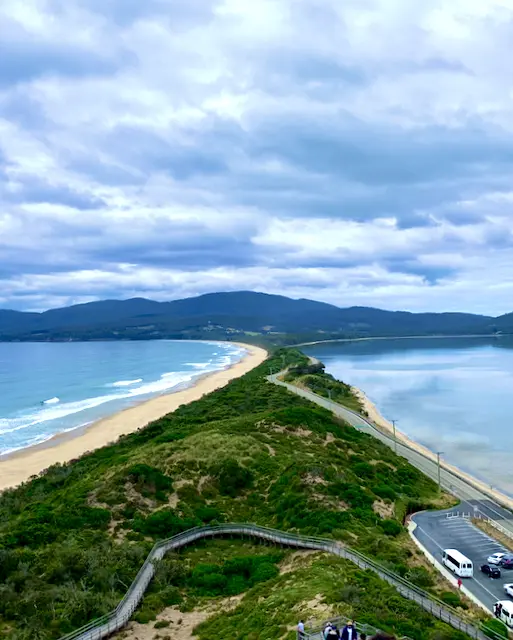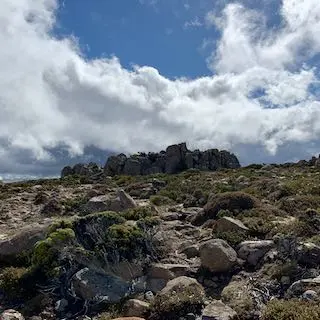A Vietnamese Odyssey: A Comprehensive Itinerary
Things to do in Hanoi - Ha Long Bay - Sapa - Ninh Binh - Hoi An - Da Nang - Mekong River Delta - Ho Chi Minh
In the heart of Southeast Asia, where ancient traditions blend seamlessly with vibrant modernity, we embarked on an unforgettable journey through Vietnam. Our adventure unfolded across a tapestry of landscapes and experiences, each more enchanting than the last.

Itinerary:
- Hanoi
- Ha Long Bay & Lan Ha Bay
- Cat Ba
- Sapa
- Lao Cai
- Ninh Binh
- Hoi An
- Da Nang
- Mekong River Delta
- Ho Chi Minh
Currency In Vietnam:
- VND (1 AUD = 16714 VND Approx)
Budget for 2 Week for 2 Persons:
- 30 Million VND (Excluding flights)
Average Basic Expenses per day:
- AirBnB: 1,000,000 VND
- Food: 300,000 VND PP
You may also like:
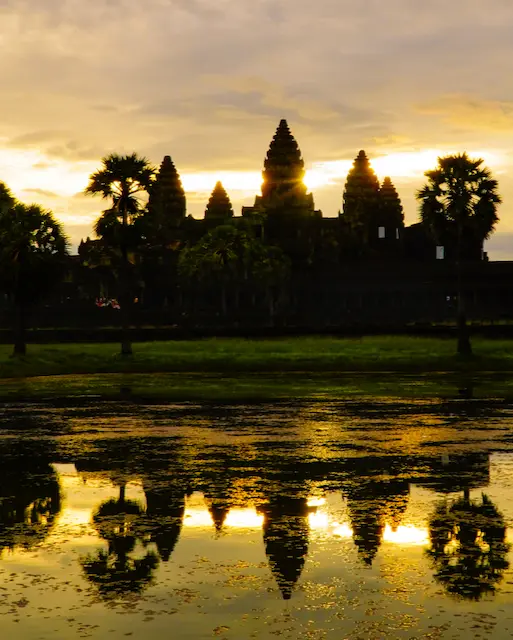
Angkor Wat, Cambodia's Stunning Stone City
Complete guide to exploring Angkor Archaeological Park

Hanoi
A Symphony of Sights and Sounds
Hanoi, Vietnam’s charming capital, is a city where ancient traditions blend effortlessly with modern vibrancy. From its bustling Old Quarter to serene lakes and historic temples, Hanoi offers a captivating journey through history, culture, and culinary delights.
Our exploration began in Hanoi, a city that pulses with life and history. As we meandered through the Old Quarter, the streets were alive with a symphony of honking scooters, the clatter of shopkeepers setting up their stalls, and the tantalizing aroma of street food wafting through the air. The narrow lanes, lined with colonial-era buildings and traditional shophouses, were a labyrinth of discovery.
The majestic St. Joseph’s Cathedral stood as a beacon of the past, its Gothic spires reaching towards the sky amidst the hustle of modern Hanoi. Nearby, Hoan Kiem Lake offered a serene escape, its emerald waters reflecting the city’s skyline and the ancient Turtle Tower that rises from its center. Here, we found a quiet moment of peace, watching the sun cast golden hues over the water.
A visit to Loading T Café provided one of the most memorable moments of our trip. When we were unexpectedly short of 40,000 VND to pay for our coffee, the café staff, with a warmth that touched our hearts, reduced the amount from our total bill. Their kindness left a lasting impression, and we made a point to return the following day to settle the amount, deeply appreciative of their generosity.
Old Quarter
The Old Quarter is the vibrant heart of Hanoi, where narrow streets brim with local markets, ancient temples, and bustling cafes. It’s a lively mix of the old and new, offering an authentic glimpse into the city’s soul.
St. Joseph’s Cathedral
St. Joseph’s Cathedral, with its stunning neo-Gothic architecture, stands as a majestic reminder of Hanoi’s French colonial past. Its towering spires and serene interior provide a peaceful retreat from the city’s hustle.

Hoan Kiem Lake
Hoan Kiem Lake is a tranquil oasis in the heart of Hanoi, surrounded by leafy promenades and historic temples. It’s the perfect spot for a leisurely stroll or to soak in the city’s serene beauty at sunrise.
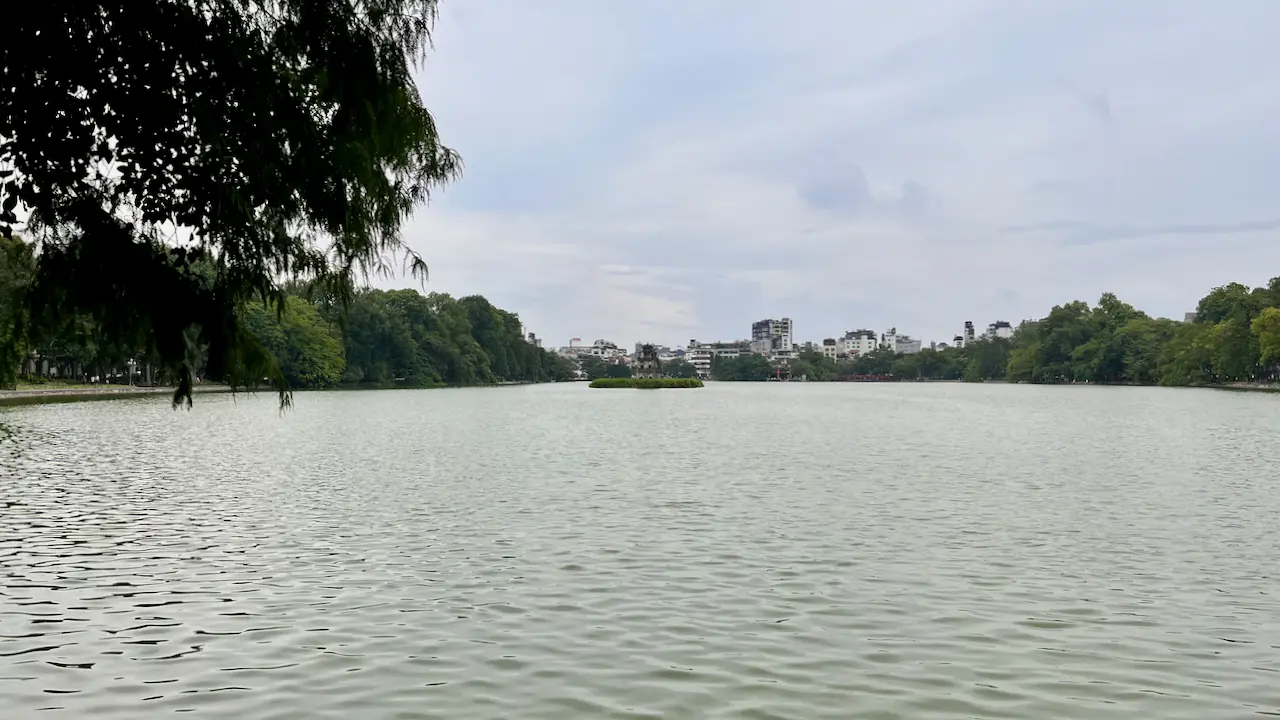
Tran Quoc Pagoda
Tran Quoc Pagoda, Hanoi’s oldest Buddhist temple, is an architectural marvel set on a small island in West Lake. Its towering red stupa and peaceful surroundings make it a must-visit spiritual site.
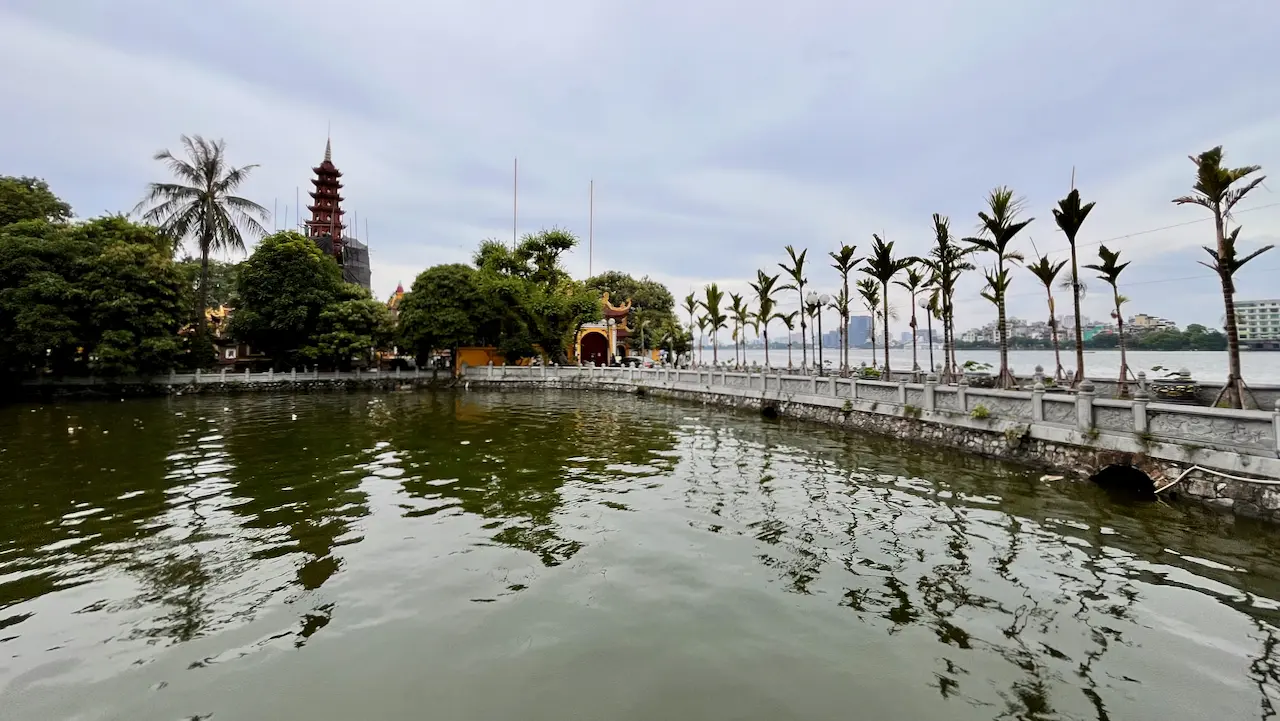
Quan Thanh Temple
Quan Thanh Temple, dedicated to the Taoist deity Tran Vu, is a centuries-old sanctuary adorned with intricate carvings and statues. It’s a place of deep cultural significance, offering a serene escape amidst ancient trees.
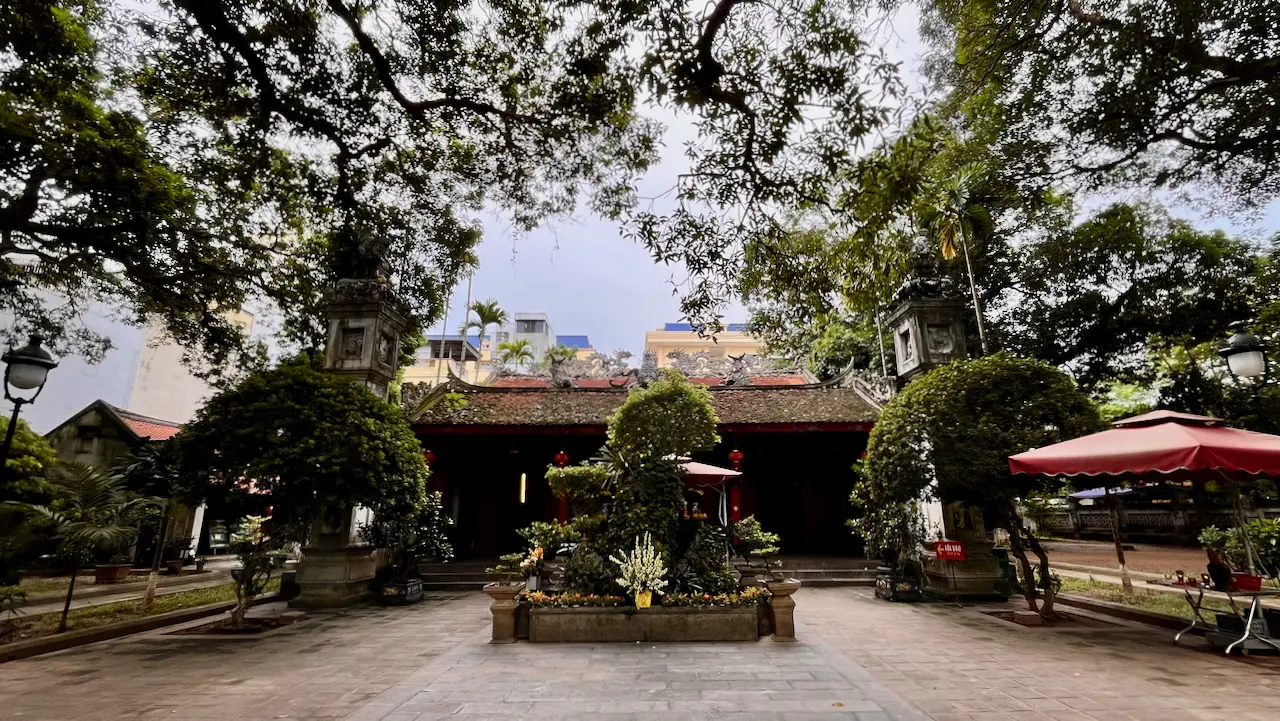
Ho Chi Minh Mausoleum
The Ho Chi Minh Mausoleum is a solemn and revered site where the embalmed body of Vietnam’s beloved leader, Ho Chi Minh, lies in state. It’s a powerful symbol of the nation’s history and enduring respect for “Uncle Ho.”

Dong Xuan Market
Dong Xuan Market, Hanoi’s largest indoor market, is a bustling hive of activity where you can find everything from fresh produce to traditional crafts. It’s a sensory overload and a great spot to experience local life.
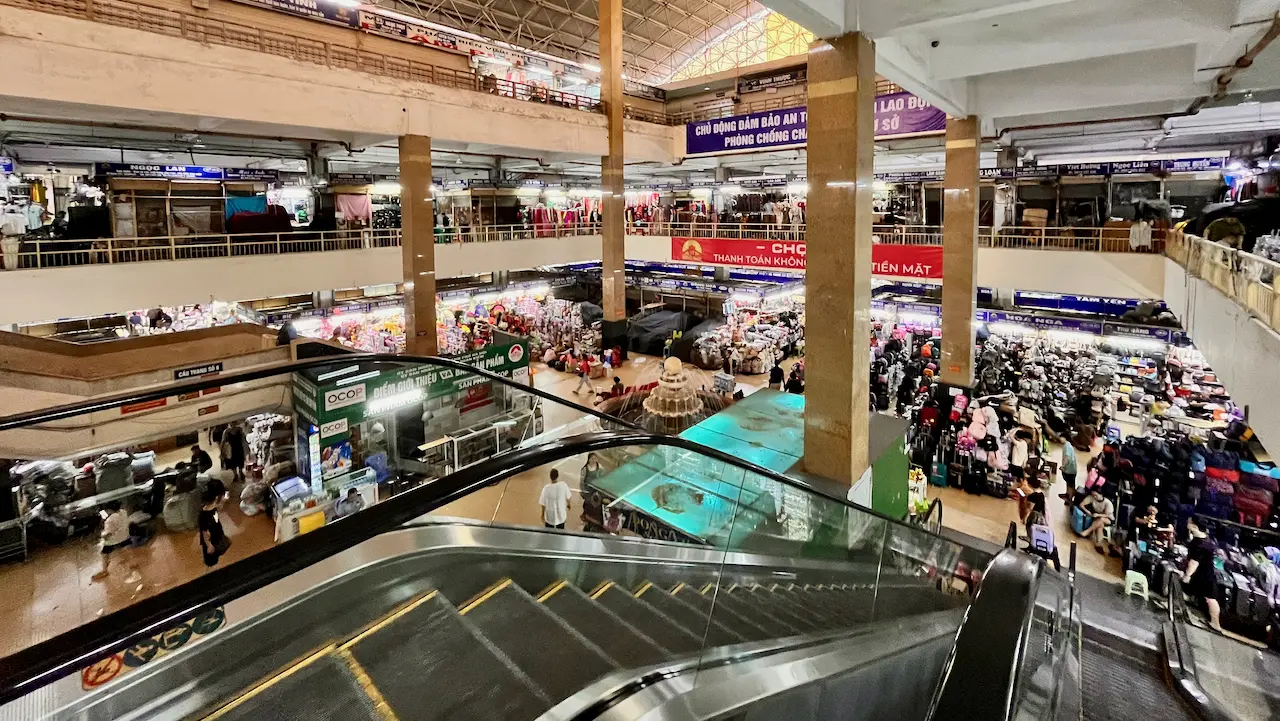
Hanoi Metro
Hanoi Metro is the city’s modern transit system, offering a convenient and efficient way to explore Hanoi’s key attractions. With its sleek design and quick access, it’s a new chapter in the city’s evolving landscape.

Ha Long Bay & Lan Ha Bay
Beauty Amidst the Trash
Ha Long Bay is a breathtaking natural wonder, famous for its emerald waters dotted with towering limestone karsts and hidden caves. A UNESCO World Heritage Site, it’s a must-see destination for its stunning scenery and tranquil cruises.
After our time in Hanoi, we boarded a bus bound for Cat Ba Island. The ride took us through a changing landscape, from the urban sprawl to the scenic beauty of northern Vietnam. Once on Cat Ba, we spent a day exploring the island’s rugged terrain, including the lush trails of Cat Ba National Park and the mysterious depths of Trung Trang Cave.
We then embarked on a day trip to Ha Long Bay and Lan Ha Bay, where we had envisioned drifting through turquoise waters surrounded by towering karst formations. However, our kayaking experience was marred by an unexpected and disheartening sight—floating debris that disrupted the tranquil waters. The sight of plastic bottles and wrappers adrift among the emerald waves cast a shadow over our experience. The contrast between the bay’s breathtaking beauty and the pollution was a poignant reminder of the environmental challenges faced by this UNESCO World Heritage site.
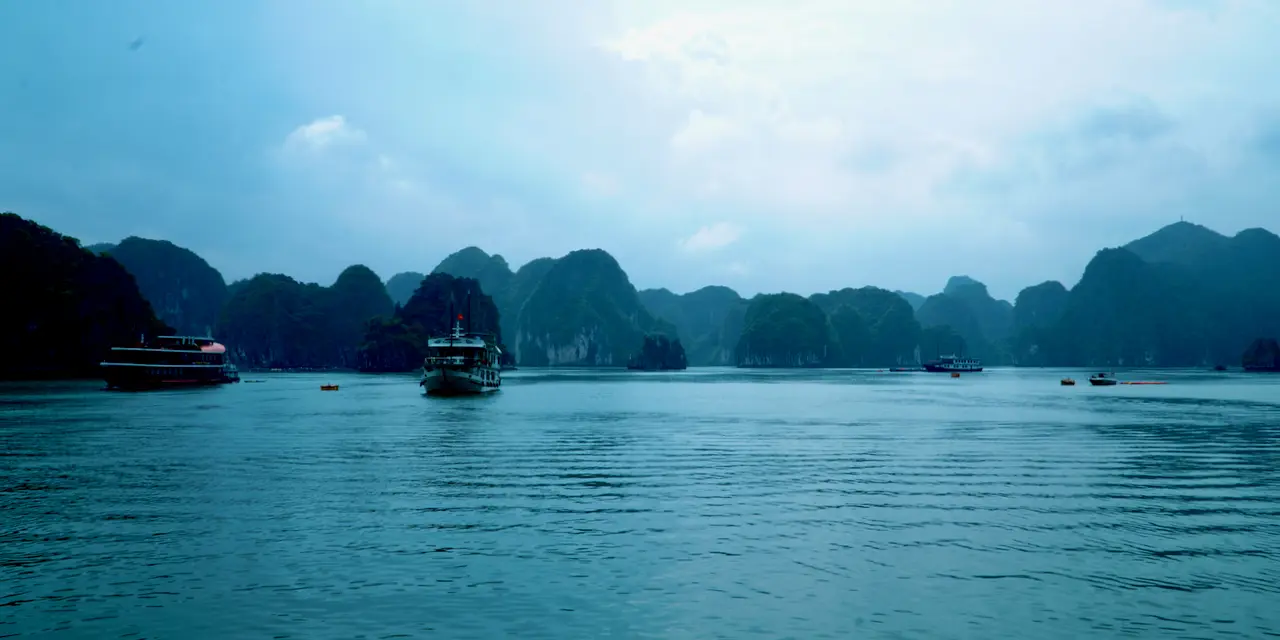
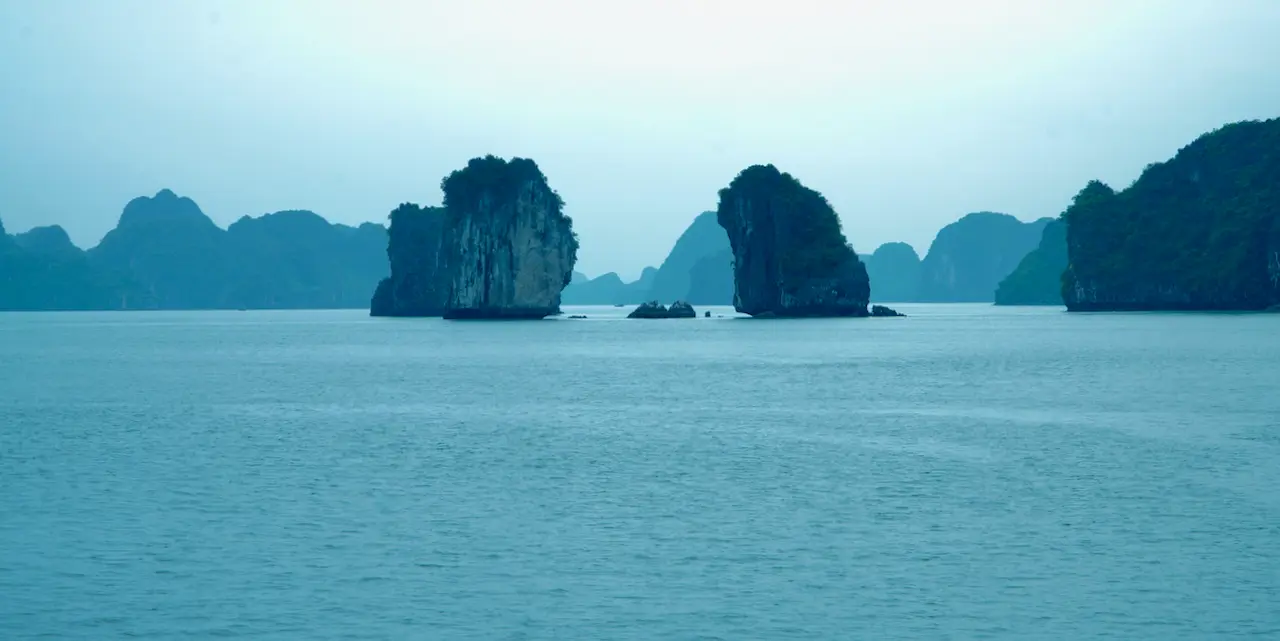
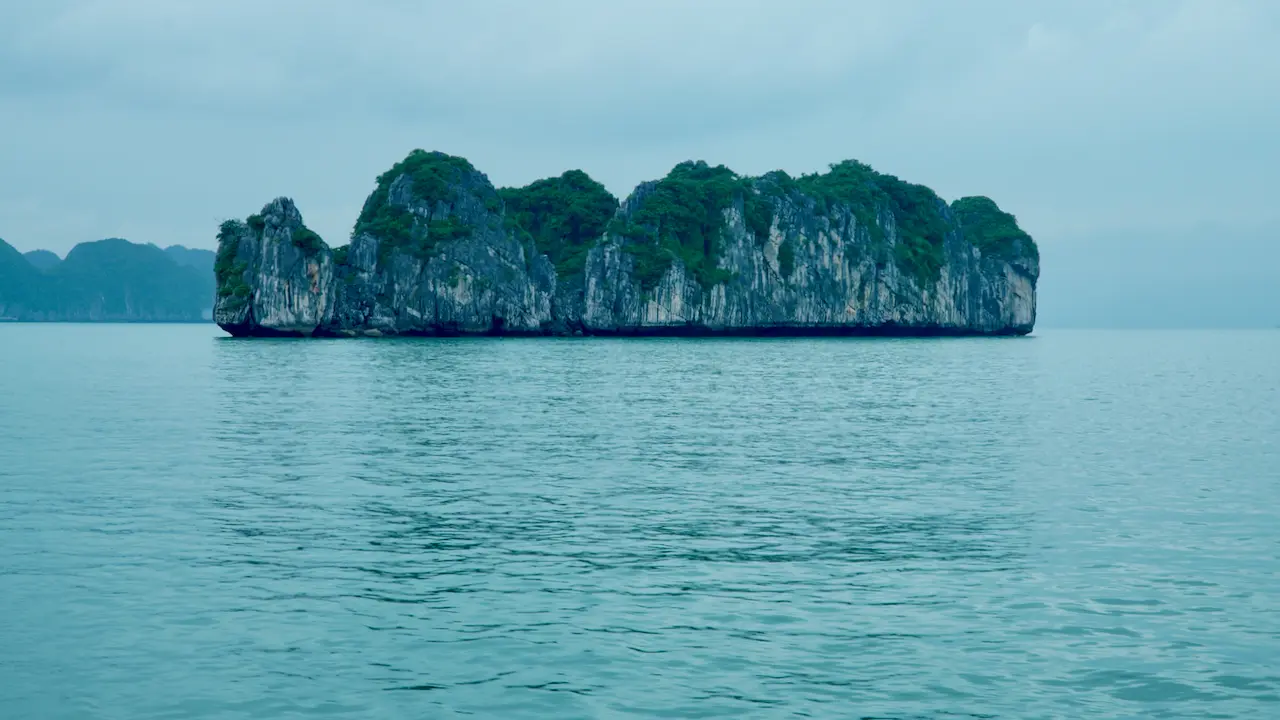
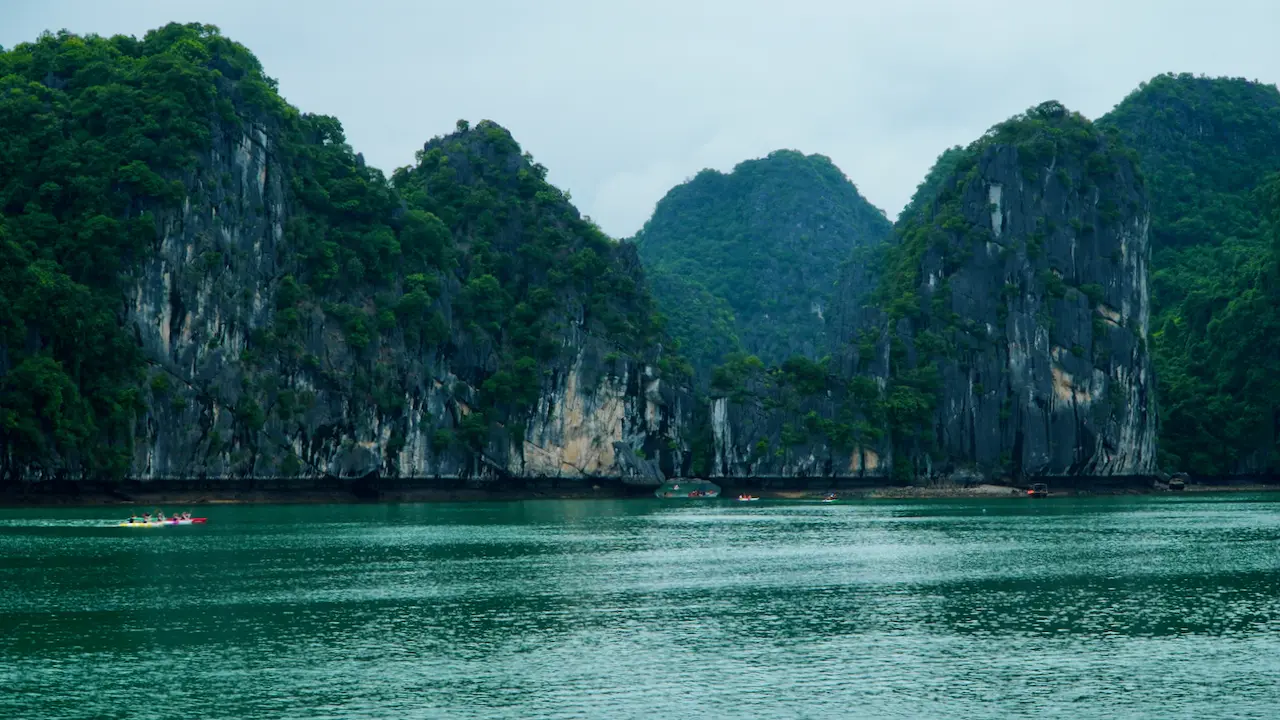
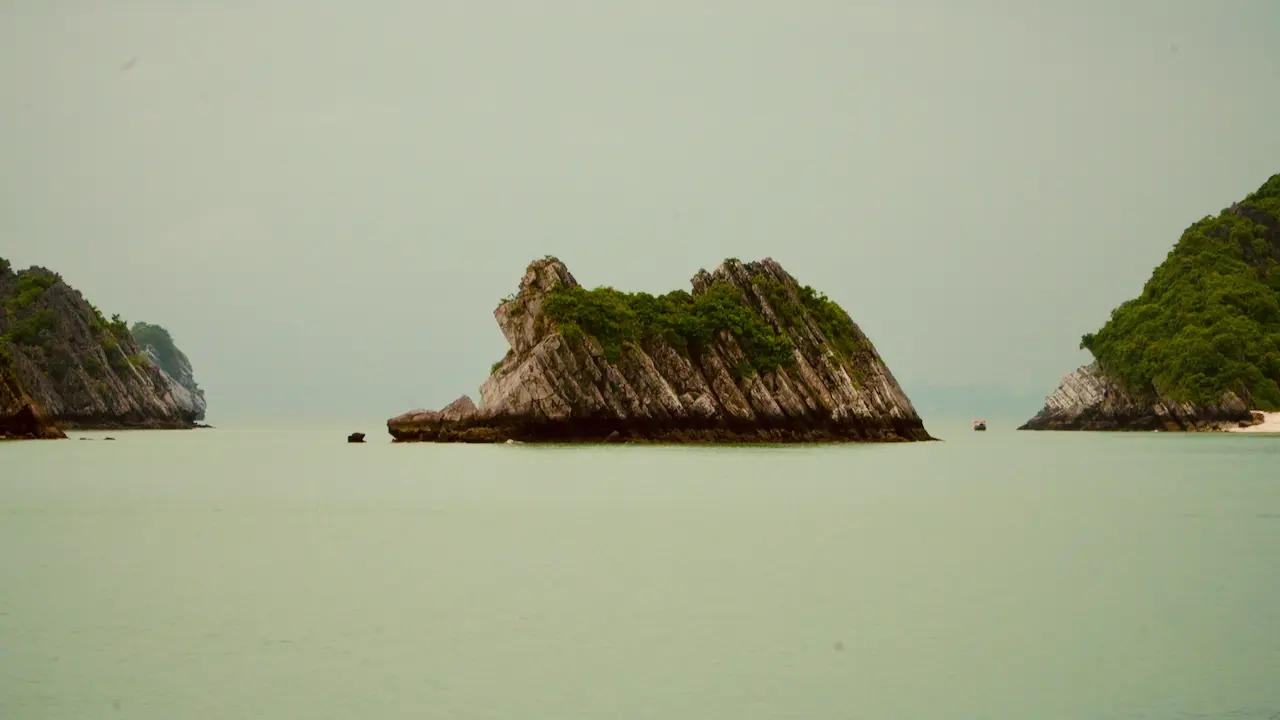

Cat Ba
Embracing Nature’s Beauty
Cat Ba Island, the largest in Ha Long Bay, offers a perfect mix of rugged natural beauty and adventure. With its lush national park, pristine beaches, and vibrant local culture, it’s an ideal escape for nature lovers and explorers.
On Cat Ba Island, we found solace in nature’s embrace. The rugged terrain of Cat Ba National Park invited us to explore its dense forests and hidden trails. As we ventured into Trung Trang Cave, we marveled at the awe-inspiring stalactites and stalagmites that had been sculpted over millennia. The cave’s cool, damp air and the echo of dripping water created an atmosphere of mystery and wonder. The island’s natural beauty offered a refreshing contrast to our earlier disappointment, reminding us of Vietnam’s unspoiled wilderness.
Cat Ba National Park
Cat Ba National Park is a stunning sanctuary of biodiversity, featuring lush forests, limestone karsts, and hidden waterfalls. It’s an adventurer’s paradise, perfect for trekking, wildlife spotting, and exploring untouched nature.
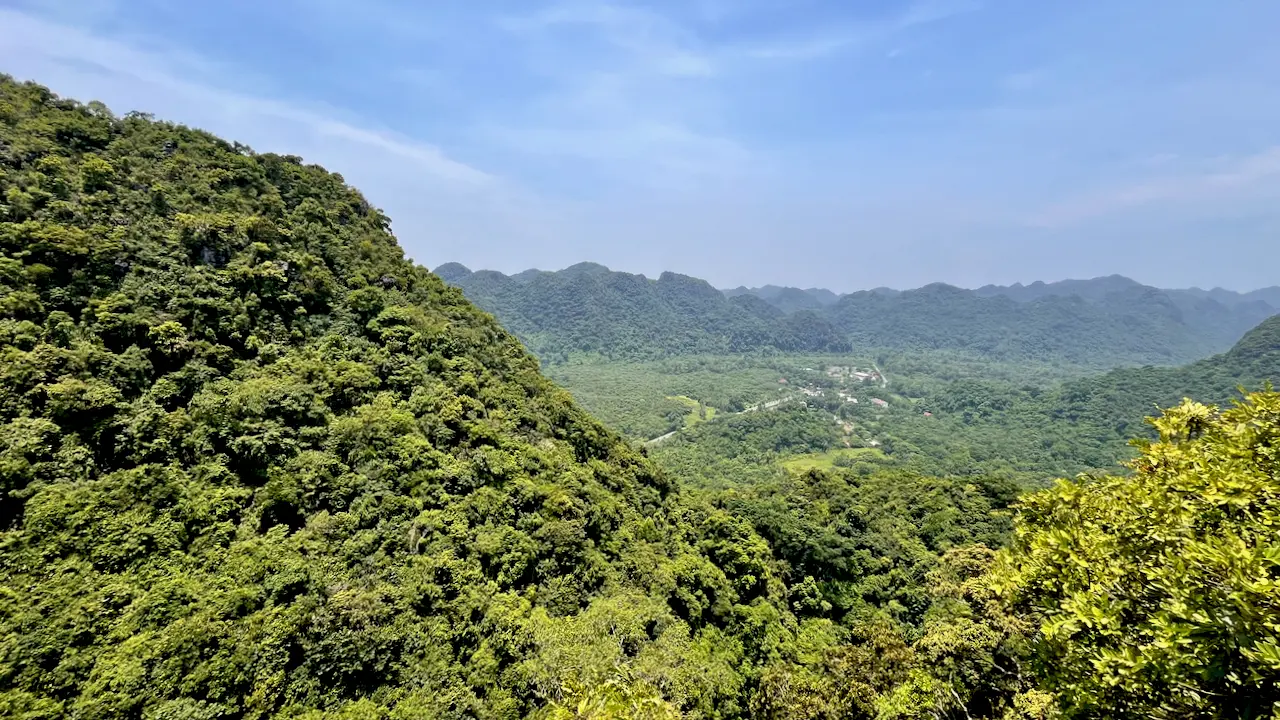
Trung Trang Cave
Trung Trang Cave, located in Cat Ba National Park, is an awe-inspiring underground wonder filled with impressive stalactites and stalagmites. This natural marvel offers a mystical journey through centuries-old formations and ancient legends.


Sapa
The Beauty and the Struggle
Sapa is a picturesque mountain town in northern Vietnam, known for its stunning terraced rice fields and rich cultural heritage. Nestled among misty valleys, it’s a haven for trekking and connecting with the local ethnic minority communities.
Our next destination was Sapa, and we took another bus to reach this mountainous region. The drive was a scenic adventure, winding through verdant hills and quaint villages. Once in Sapa, we were greeted by the stunning vistas of Fansipan and the serene village of Ta Van. Yet, amidst this natural splendor, we encountered a more somber reality. The sight of local children performing dances and selling souvenirs on the streets was a stark reminder of the economic struggles faced by some communities. Their resilience in the face of hardship was both moving and troubling, casting a shadow over the otherwise idyllic surroundings.

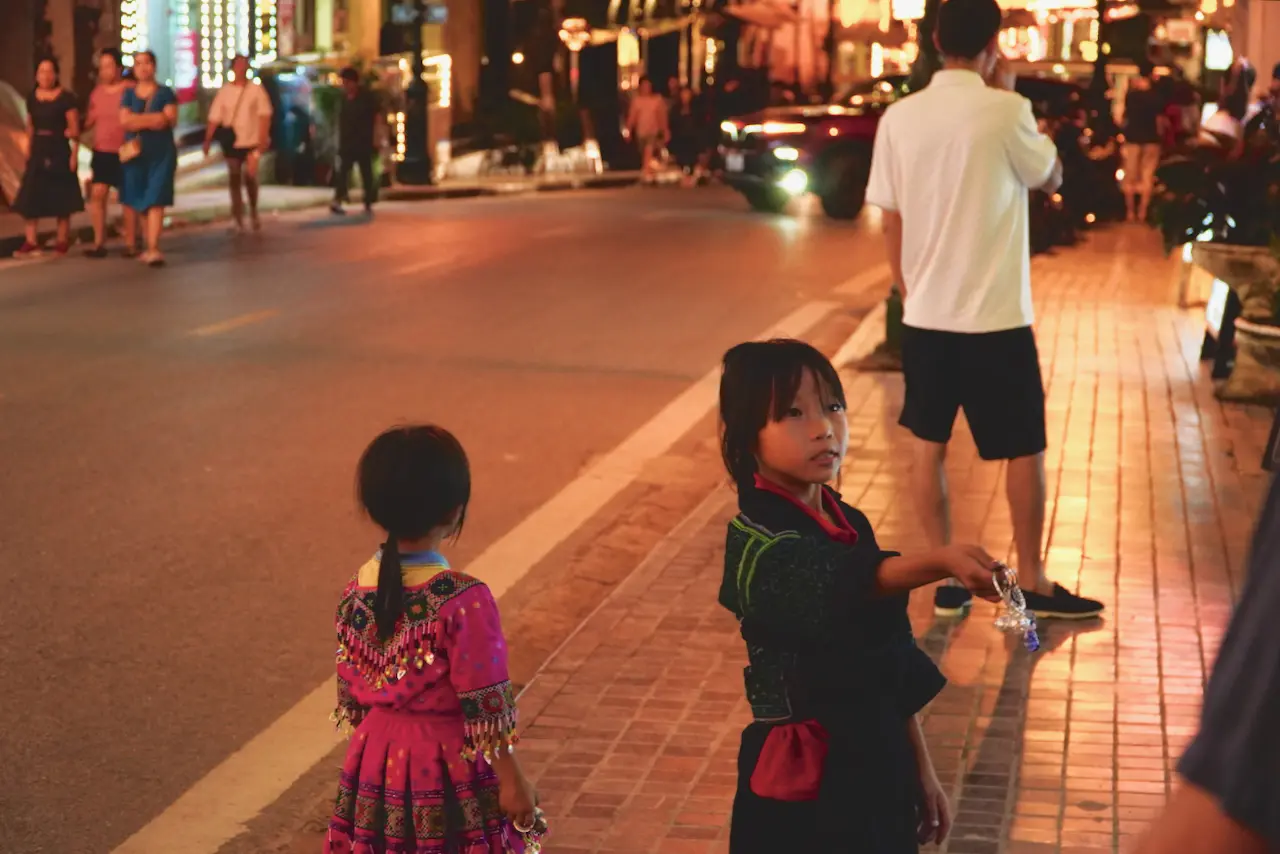
Fansipan
Fansipan, known as the “Roof of Indochina,” is Vietnam’s highest peak, offering breathtaking views of the surrounding mountains. A trek to its summit or a scenic cable car ride provides an unforgettable adventure amidst the clouds.
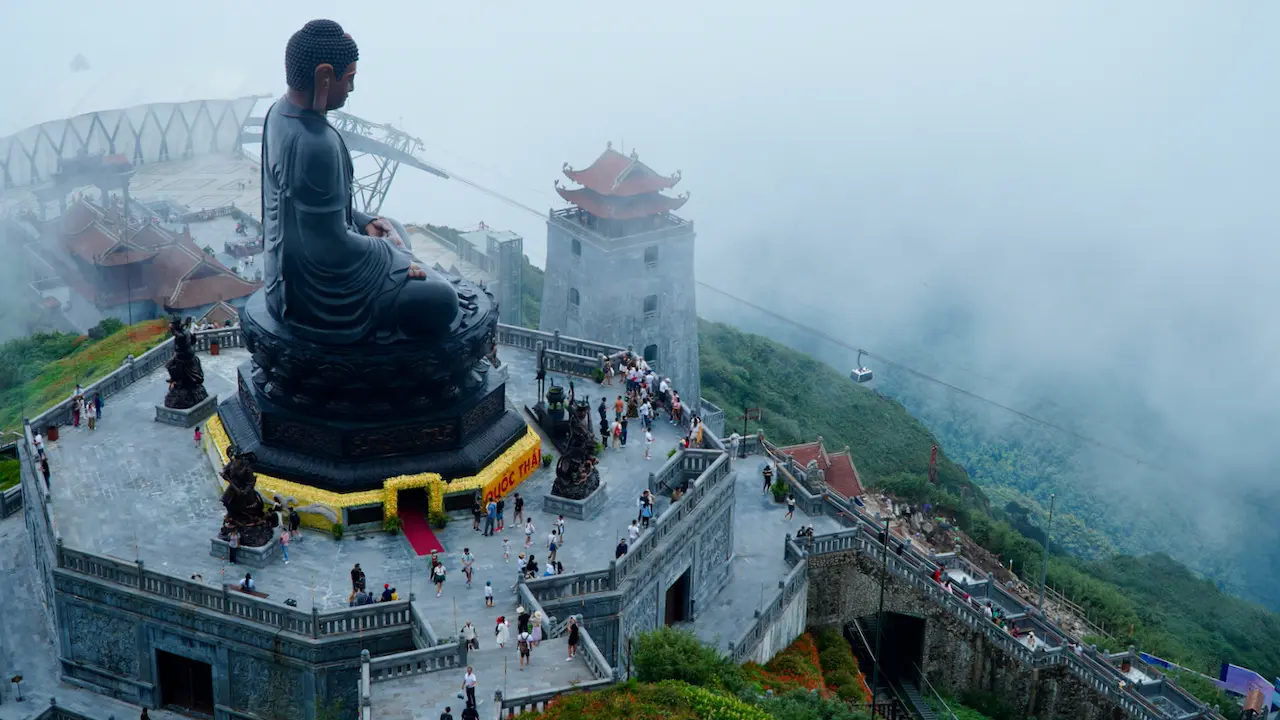


Ta Van and Lao Chai
Ta Van is a tranquil village near Sapa, where traditional stilt houses dot the lush green valleys. It’s an ideal spot for homestays, allowing visitors to immerse themselves in the daily life and culture of the local ethnic minorities.
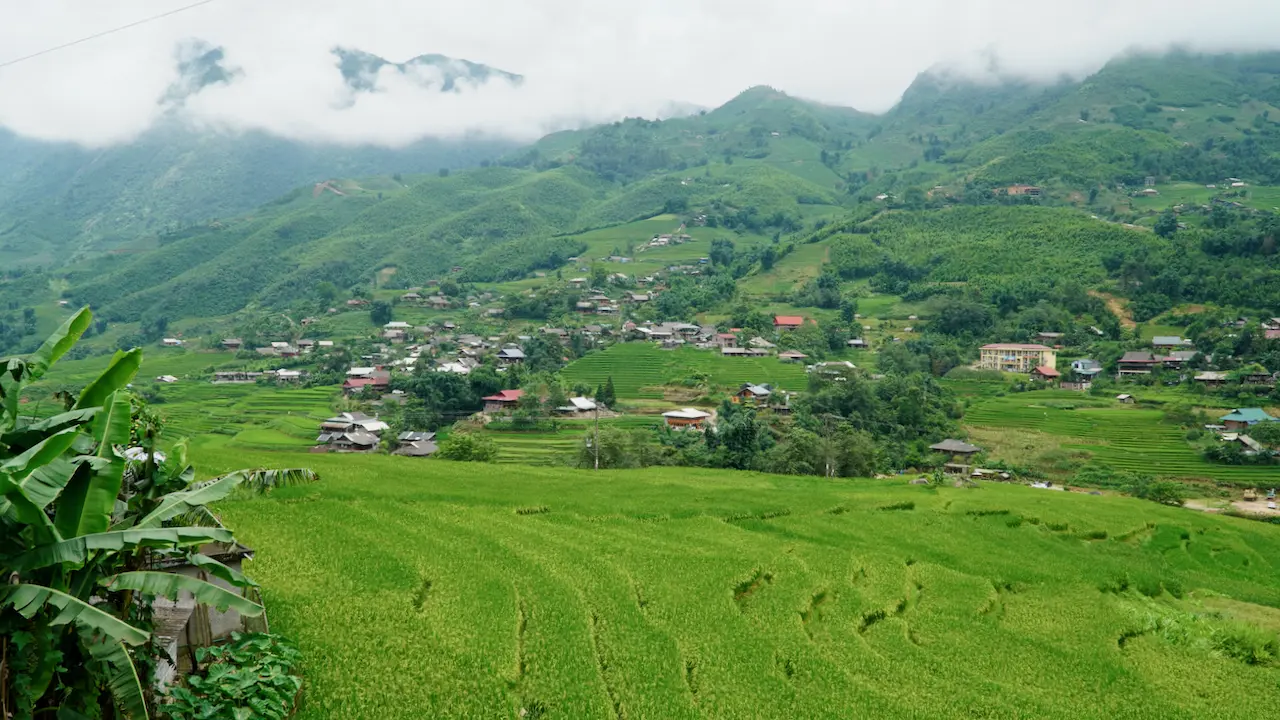
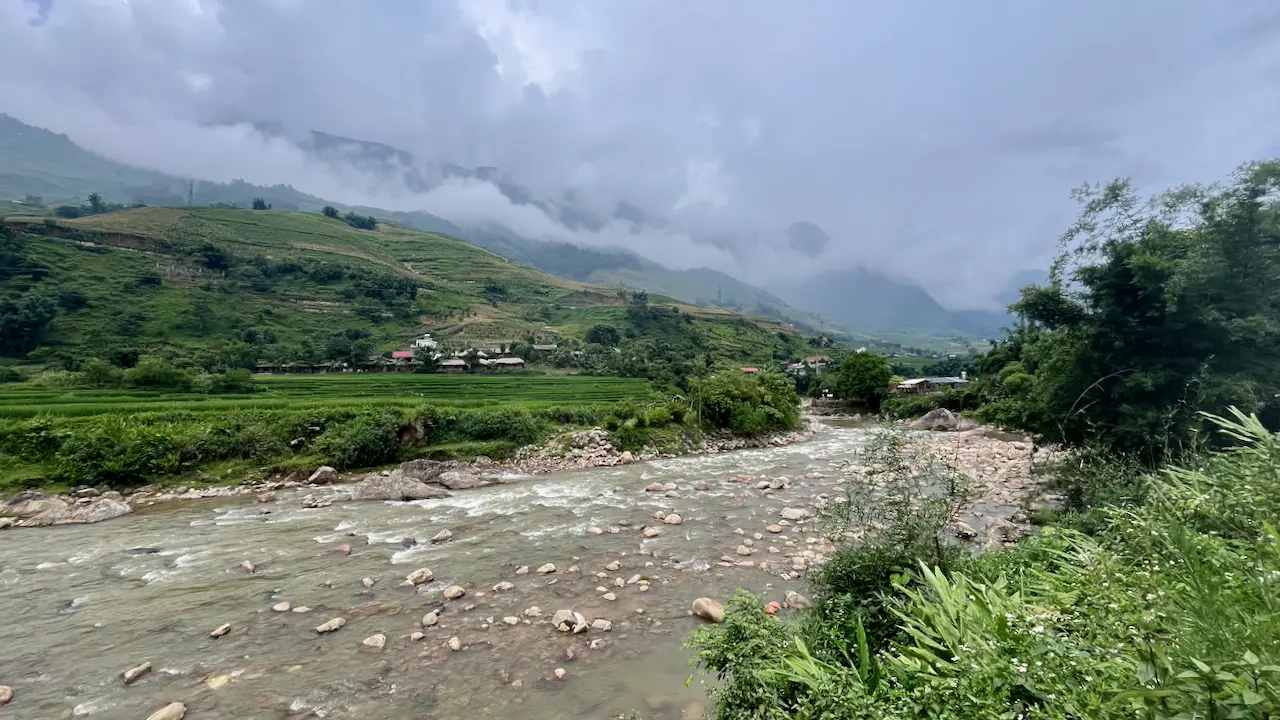

Lao Cai
The Border and Beyond
Lao Cai, a picturesque gateway to northern Vietnam, is known for its breathtaking mountain landscapes and vibrant ethnic markets. Home to Sapa and the majestic Fansipan peak, it offers an unforgettable experience of nature and cultural richness.
From Sapa, we traveled to Lao Cai by public bus. Here, we visited the Chinese border monument, a significant marker that offered insight into the region’s historical and cultural connections. The journey then took us back to Hanoi by train, where we quickly boarded another train bound for Ninh Binh.
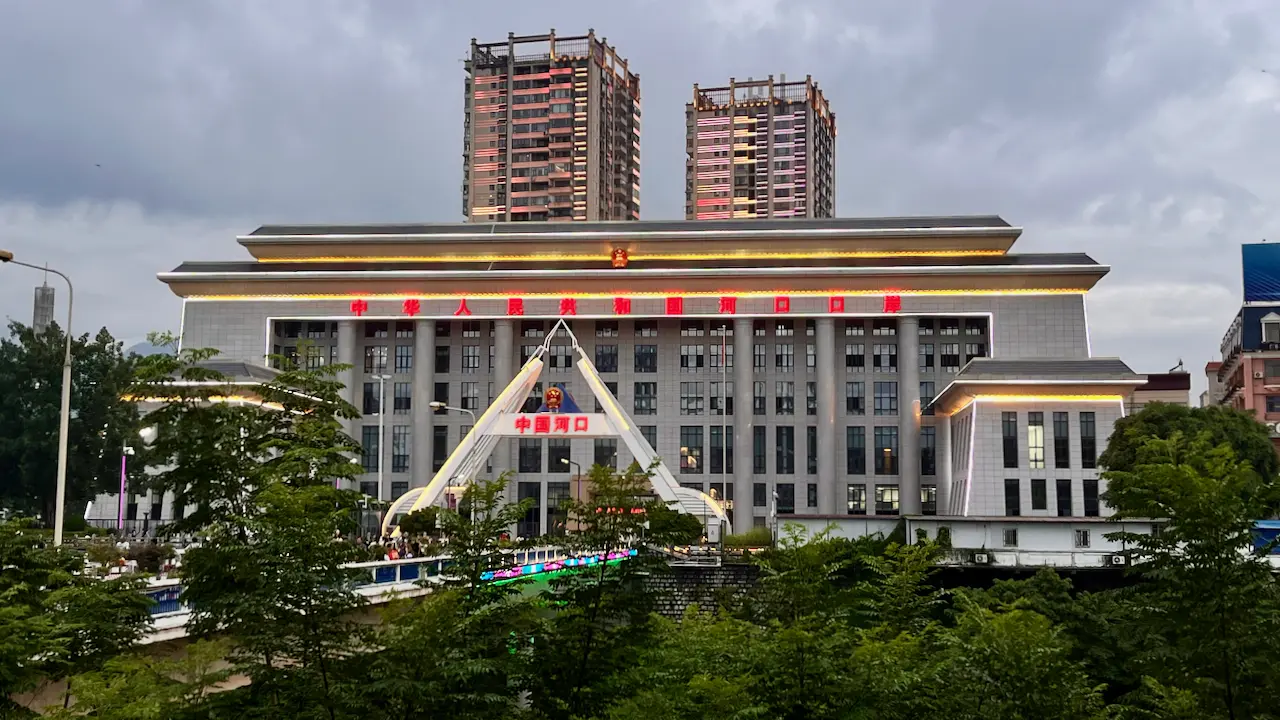

Ninh Binh
A Land of Tranquility
Ninh Binh, often called “Halong Bay on land,” is a stunning region of dramatic limestone karsts, lush landscapes, and serene waterways. It’s a haven for nature lovers and those seeking tranquility amidst Vietnam’s breathtaking countryside. The tranquil waterways of Trang An meandered through a landscape of limestone peaks and lush greenery, creating a scene of almost otherworldly beauty. As we rowed through the winding rivers and explored the caves, we felt transported back in time.

Trang An
Trang An, a UNESCO World Heritage site, is a mesmerizing labyrinth of rivers and towering limestone cliffs, best explored by boat. Its hidden caves and ancient temples offer a journey through both natural beauty and spiritual serenity.
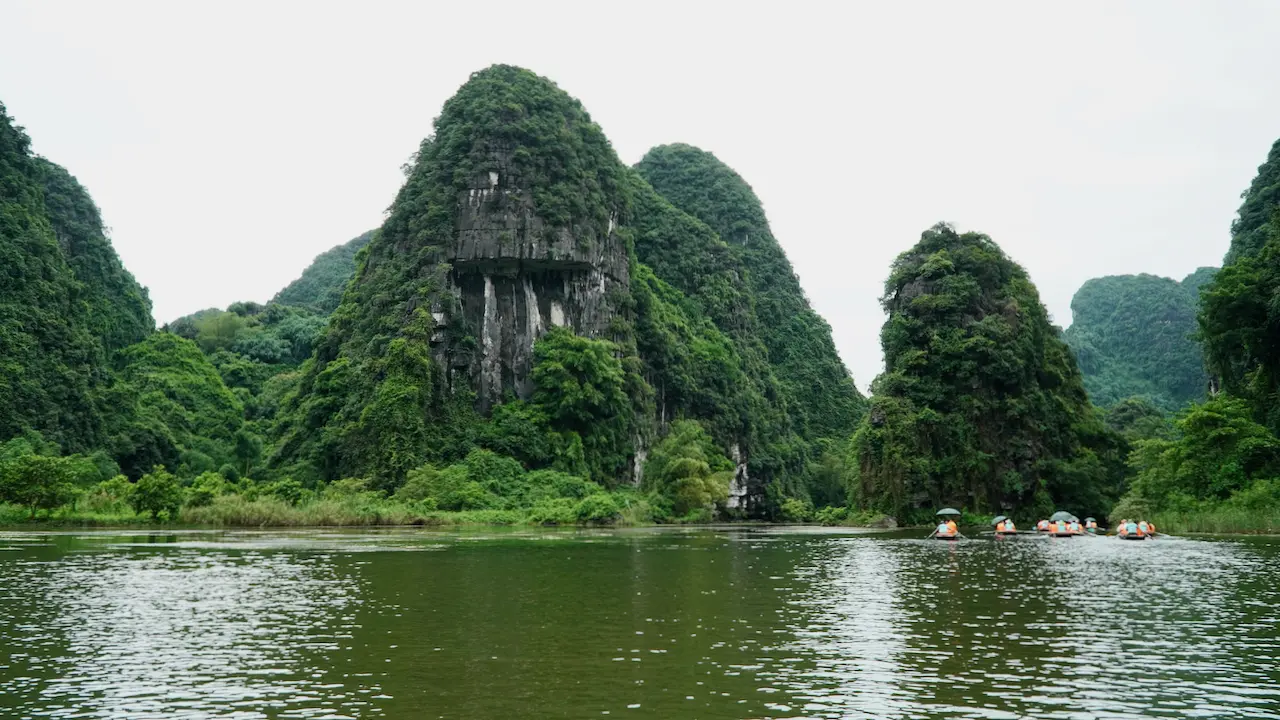
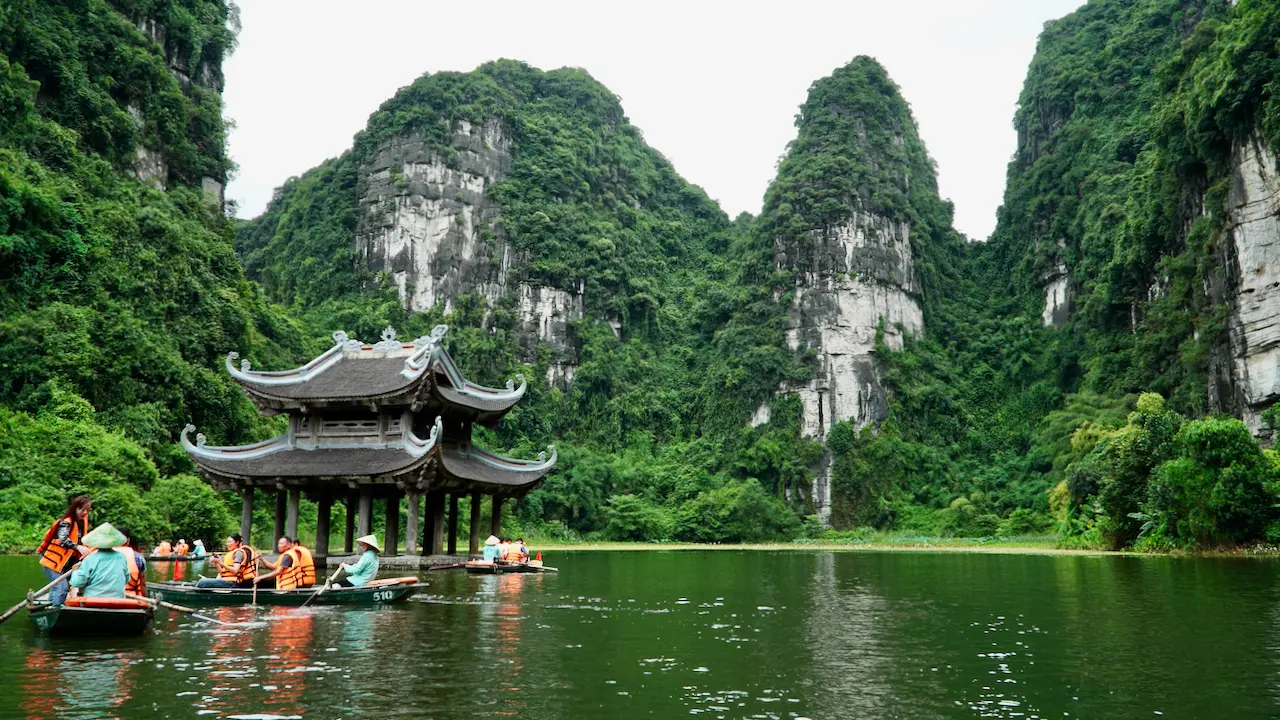
Hang Mua
Hang Mua, known for its panoramic views, rewards visitors with a breathtaking sight after climbing 500 steps to the summit. The stunning vista of the Tam Coc valley below, framed by limestone peaks, is one of Ninh Binh’s most iconic scenes.
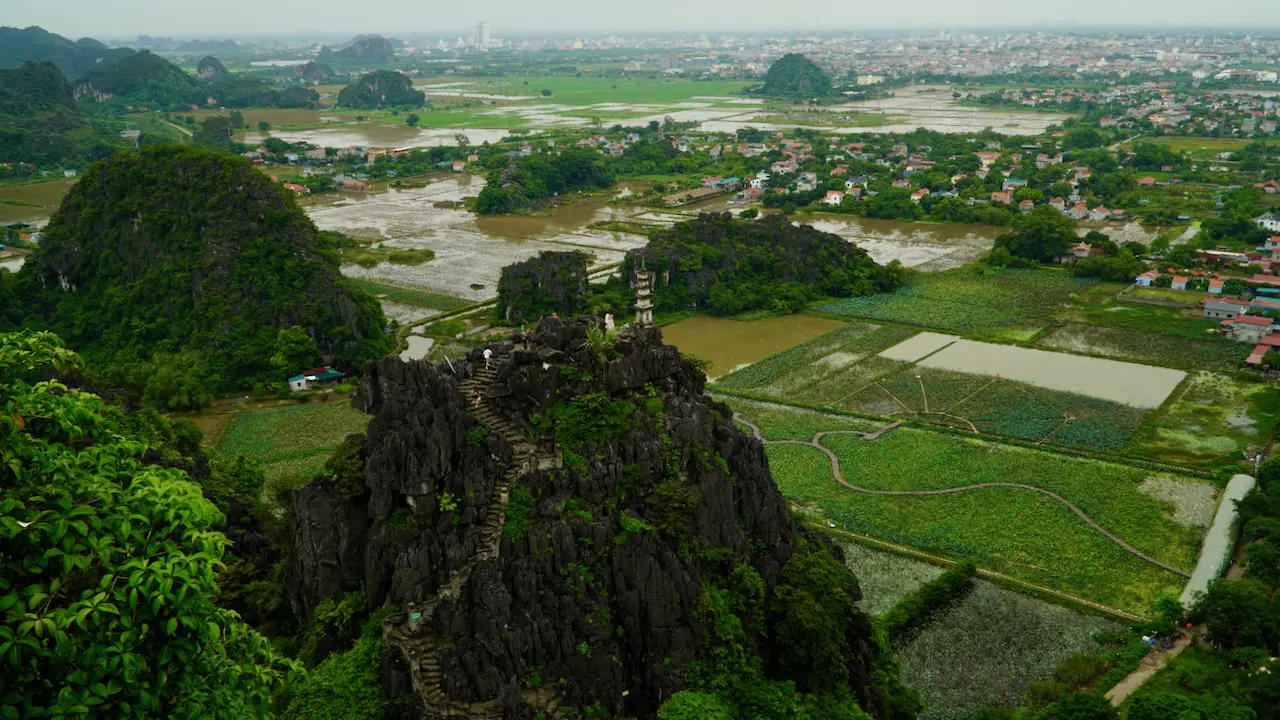

Hoi An
Echoes of History
Hoi An is a charming ancient town where lantern-lit streets, historic buildings, and riverside cafes create an enchanting atmosphere. Renowned for its well-preserved architecture and vibrant culture, it’s a UNESCO World Heritage site that offers a timeless glimpse into Vietnam’s past.
Our next destination was Da Nang, reached by an overnight train. Upon arrival, we rented a scooter and drove to Hoi An, a city renowned for its charming Old Town and vibrant lantern-lit streets. We spent the day immersing ourselves in the city’s historic ambiance and serene beauty.
Old Town
Hoi An’s Old Town is a UNESCO World Heritage site, where centuries-old architecture and lantern-lit streets transport you back in time. This charming riverside area is a treasure trove of historic buildings, cozy cafes, and vibrant markets.

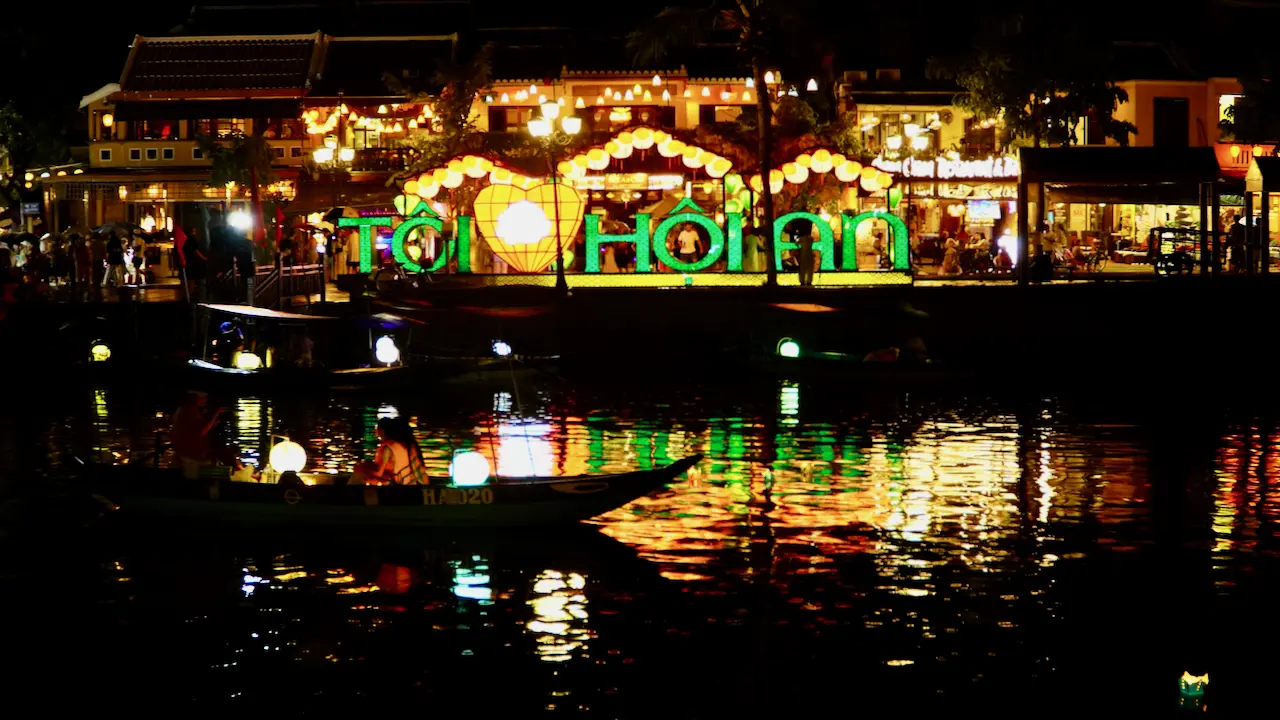

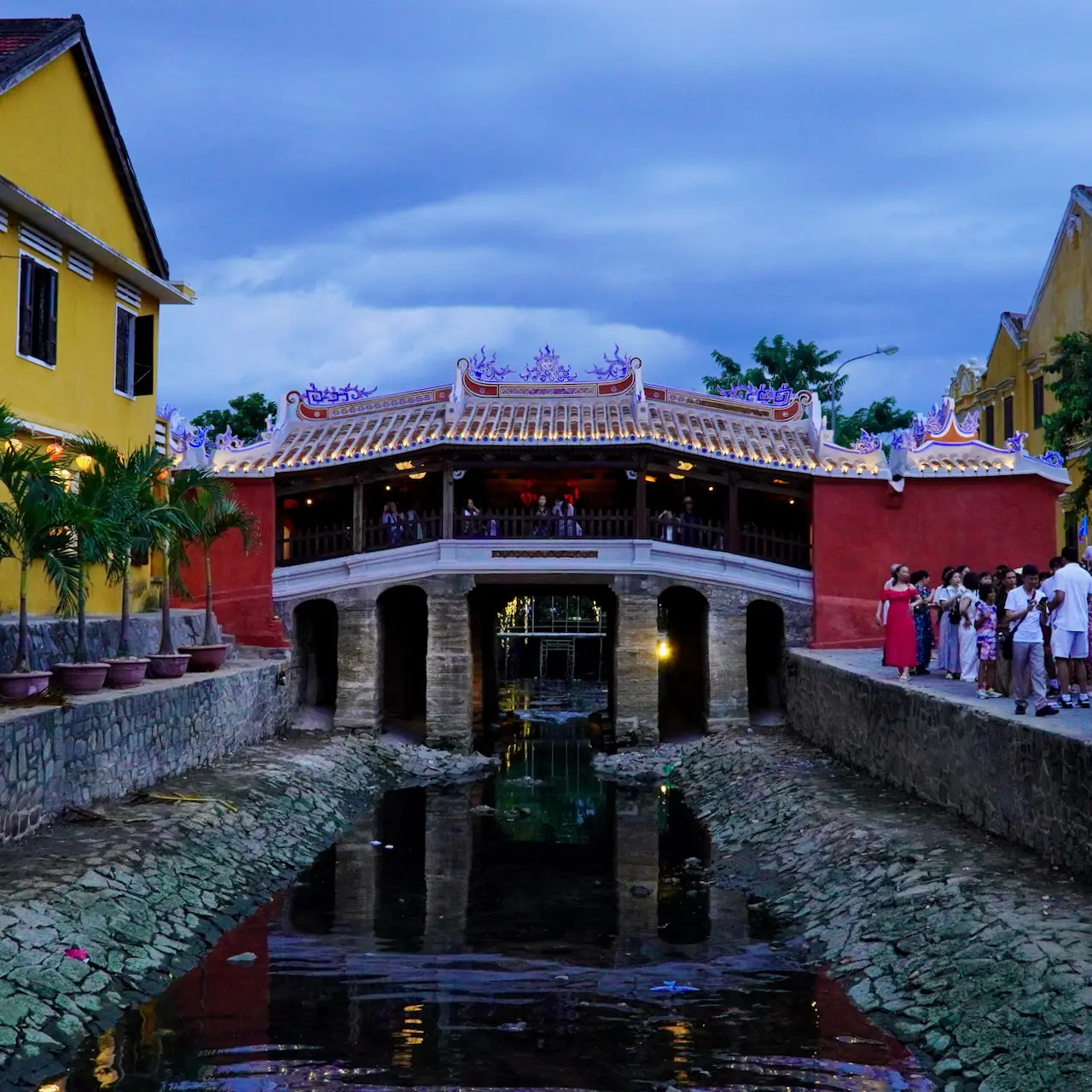
Cam Thanh
Cam Thanh, known as the “Coconut Village,” offers a peaceful escape with its lush palm groves and unique bamboo basket boat tours. It’s the perfect spot to experience rural life and explore Hoi An’s serene waterways.
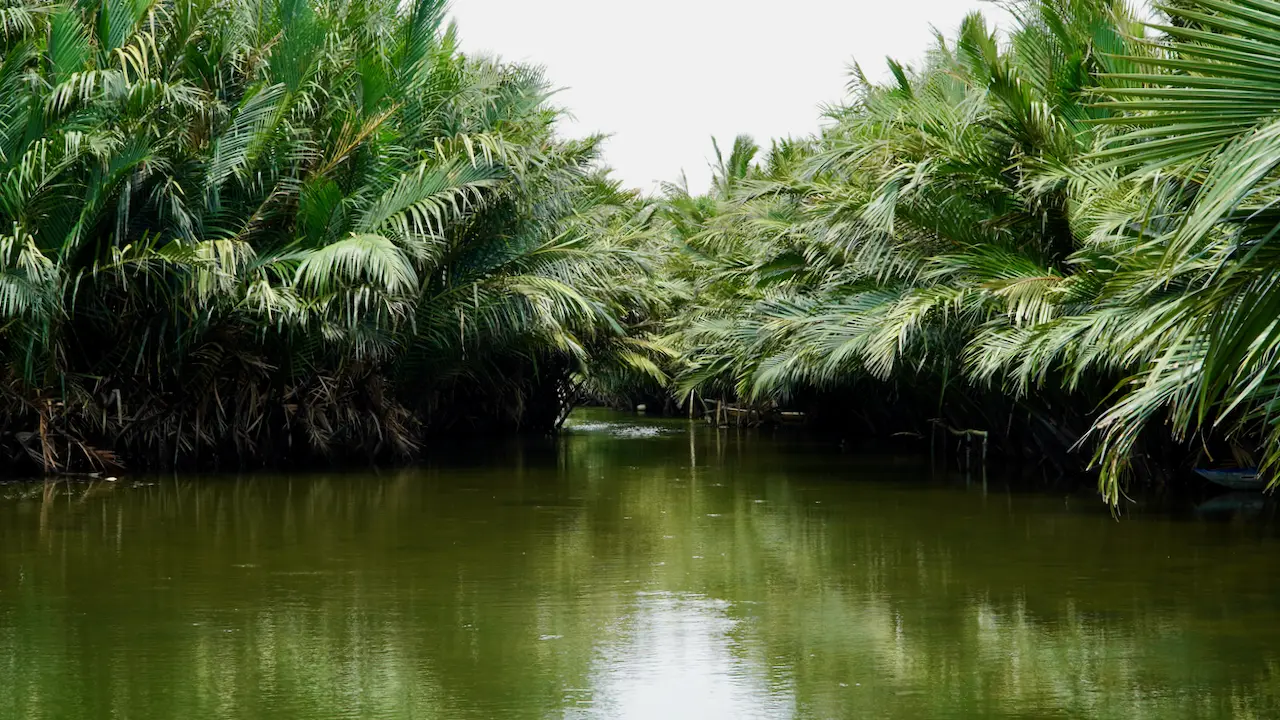

Da Nang
Coastal Charms
Da Nang is a dynamic coastal city known for its pristine beaches, modern skyline, and proximity to stunning natural wonders. From the iconic Golden Bridge at Ba Na Hills to the Marble Mountains, it’s a destination that blends urban excitement with natural beauty.
The following day, we drove back to Da Nang, exploring the majestic Hai Van Pass along the way. The panoramic views from the pass were nothing short of breathtaking. We also visited Chùa Linh Ứng, a serene temple with a towering Buddha statue that offered a peaceful retreat.
Hai Van Pass
The Hai Van Pass is a stunning mountain road that winds along the coast, offering breathtaking views of the ocean and lush hills. This scenic route is a must-drive for anyone seeking adventure and panoramic vistas.
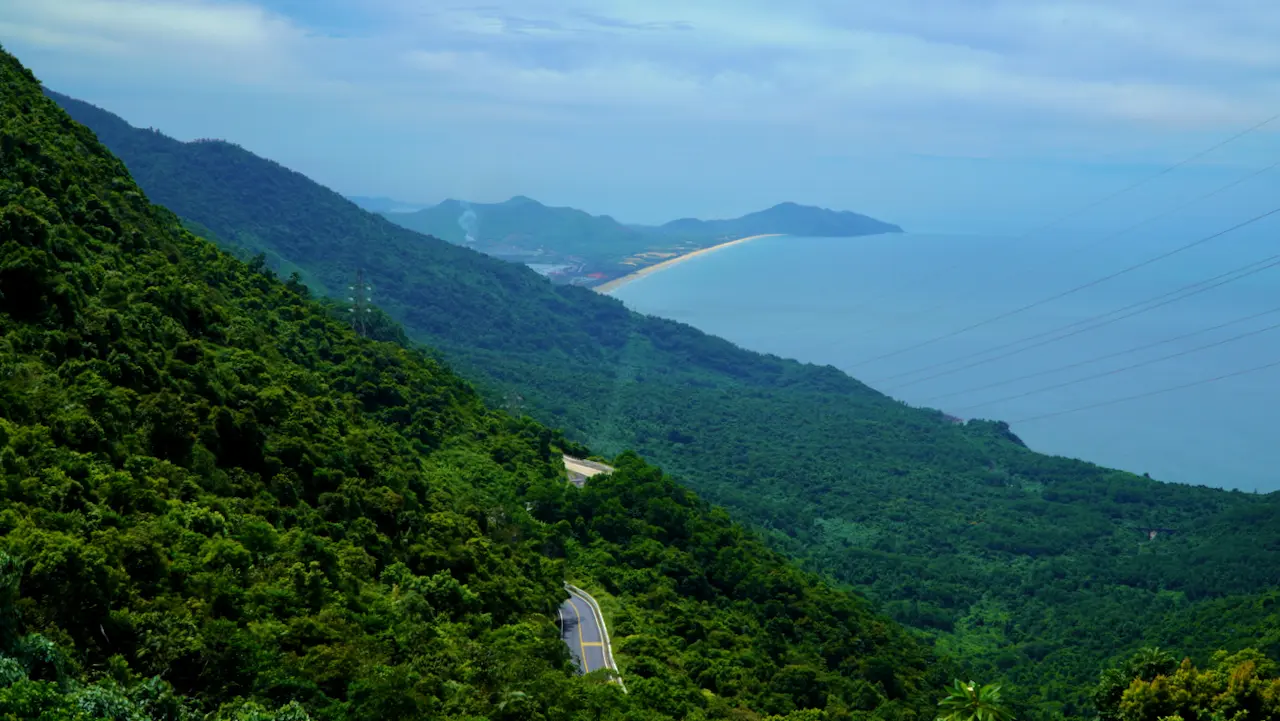

Chùa Linh Ứng
Chùa Linh Ứng, perched on the Son Tra Peninsula, is home to a majestic 67-meter tall Lady Buddha statue. The temple offers stunning views of Da Nang and a serene atmosphere for spiritual reflection.

Mekong River Delta
A Journey Through Time
The Mekong River Delta is a lush, fertile region where life flows at the rhythm of the river, with floating markets, rice paddies, and charming villages. It’s a vibrant tapestry of waterways and culture, offering a glimpse into the traditional Vietnamese way of life.
Later, we took a late-night flight from Da Nang to Ho Chi Minh City. The next morning, we traveled by public bus to Mỹ Tho in the Mekong River Delta. Here, we embarked on a boat tour through the delta’s winding waterways, discovering the lush landscapes and floating markets. Returning to Ho Chi Minh City the same day, we spent the next day exploring the city’s vibrant energy.
Mỹ Tho
My Tho, a gateway to the Mekong Delta, offers a glimpse into life on the river with its bustling floating markets and lush orchards. A boat tour here reveals the vibrant culture and natural beauty of the delta.
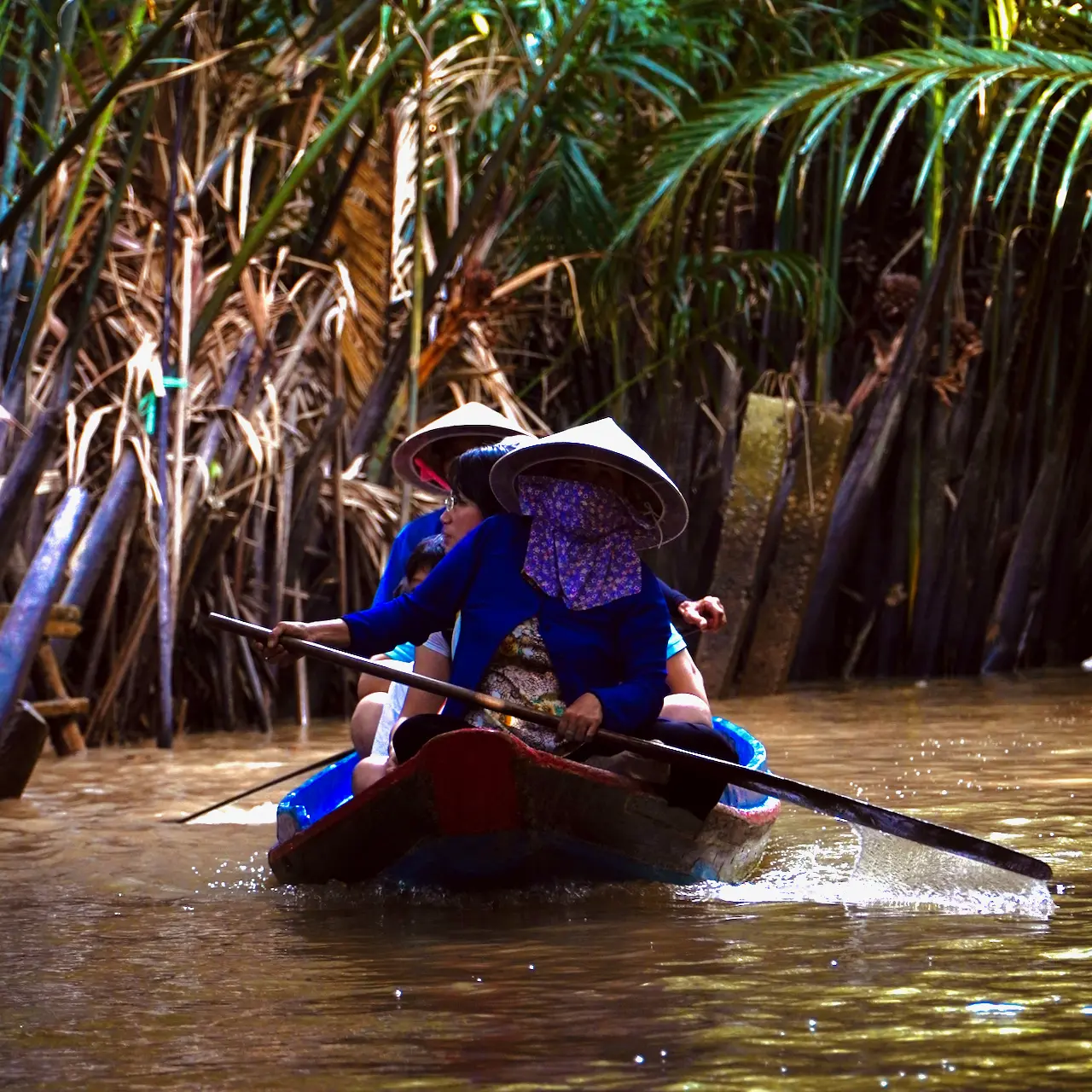
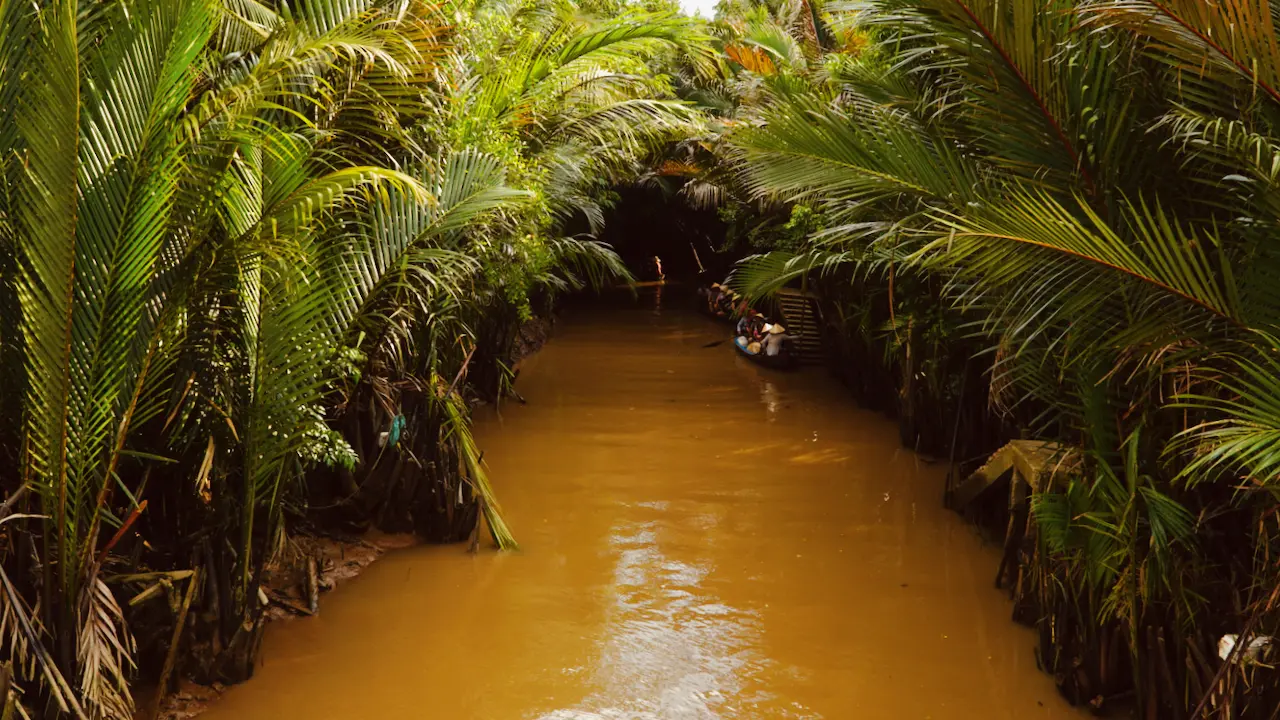
Chùa Vĩnh Tràng
Vinh Trang Pagoda, located in the Mekong Delta, is a striking blend of Vietnamese, Chinese, and Khmer architectural styles, surrounded by lush gardens. Its towering Buddha statues and intricate mosaics make it a peaceful and visually stunning place to visit.

Ho Chi Minh
A Modern Marvel
Ho Chi Minh City, Vietnam’s bustling metropolis, is a city of contrasts where colonial architecture meets soaring skyscrapers. From the historic Notre-Dame Cathedral to the vibrant Ben Thanh Market, it’s a place where history and modernity converge in an energetic pulse.
Our journey culminated in Ho Chi Minh City, a metropolis that showcased the dynamic fusion of past and present. The grandeur of the Independence Palace and the elegant architecture of Saigon Central Post Office stood as testaments to the city’s historical significance. The bustling Ben Thanh Market offered a sensory overload of sights, sounds, and smells, while Bui Vien Walking Street pulsed with nightlife energy.
The Saigon Waterbus provided a unique perspective of the city, gliding along the waterways that weave through the urban landscape. Landmark 81, towering above the city, symbolized the modern ambitions and rapid growth of Ho Chi Minh City, standing as a beacon of progress in a land rich with history.
Independence Palace
The Independence Palace, also known as the Reunification Palace, is a historic symbol of the end of the Vietnam War. Its grand architecture and preserved rooms offer a fascinating insight into the country’s turbulent history.
Saigon Central Post Office
The Saigon Central Post Office, designed by Gustave Eiffel, is a striking example of French colonial architecture. Its grand hall and detailed interiors make it a popular stop for history buffs and architecture enthusiasts alike.
Ben Thanh Market
Ben Thanh Market is a lively hub of commerce, where you can find everything from fresh produce to souvenirs. This bustling market is a sensory overload and a must-visit for experiencing local life.
Bui Vien Walking Street
Bui Vien Walking Street is the heart of Ho Chi Minh City’s nightlife, buzzing with bars, street food vendors, and live music. It’s the place to be for a vibrant, energetic evening in the city.
Đ. Nguyễn Huệ
Đ. Nguyễn Huệ, a pedestrian street in the heart of Ho Chi Minh City, is lined with modern buildings, fountains, and vibrant public spaces. It’s a popular spot for locals and tourists alike, especially during festivals and events.
Saigon Japan Town
Saigon Japan Town, nestled in District 1, is a small but bustling area filled with authentic Japanese restaurants, bars, and shops. It’s a cultural enclave that offers a taste of Japan right in the heart of Ho Chi Minh City.
Saigon Waterbus
The Saigon Waterbus is a scenic and relaxing way to explore the city’s waterways, offering a unique perspective of Ho Chi Minh City. The route provides stunning views of the skyline and peaceful moments away from the urban rush.
Landmark 81
Landmark 81, Vietnam’s tallest skyscraper, is a symbol of modern Ho Chi Minh City, offering luxury shopping, dining, and stunning views from its observation deck. It’s a must-visit for those looking to experience the city’s rapid development from above.
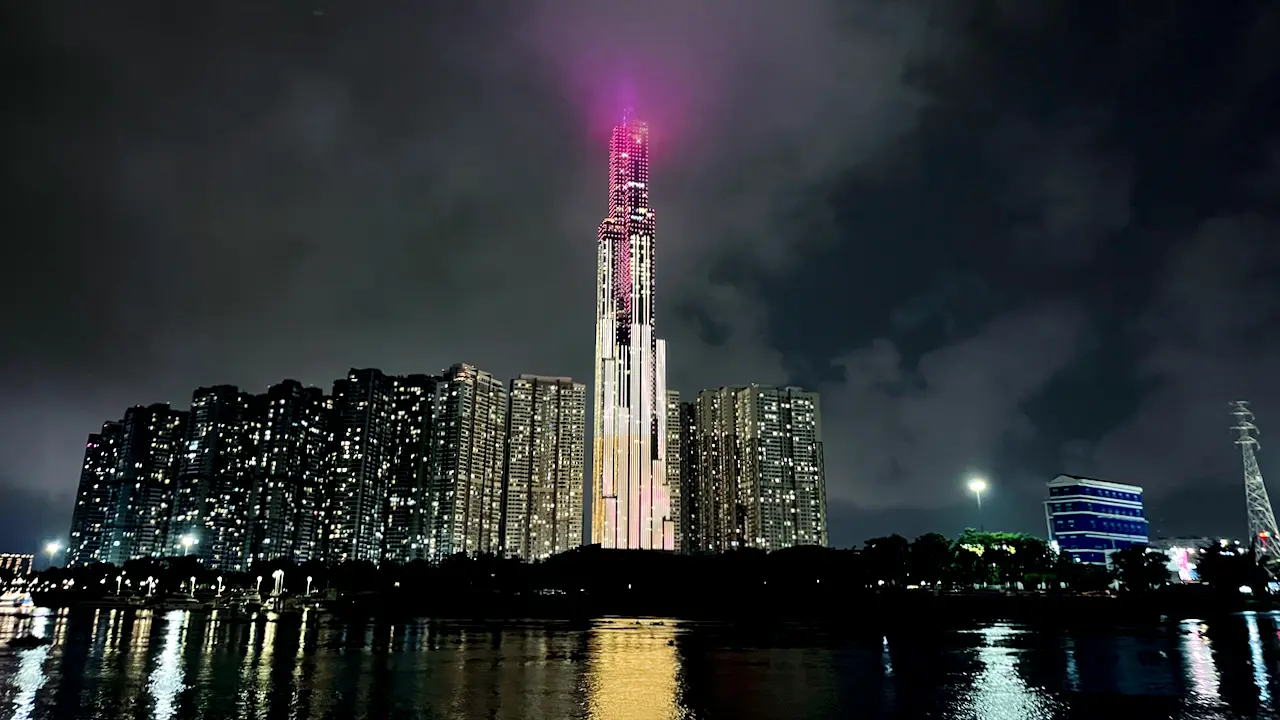

Popular Travel Guides
Our Most Popular Destinations
Latest from the Blog
Find Travel Inspiration



